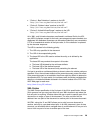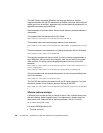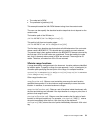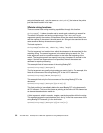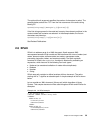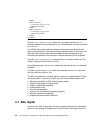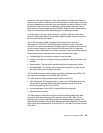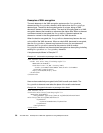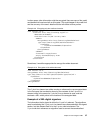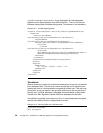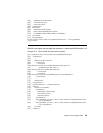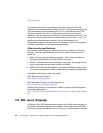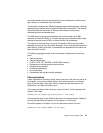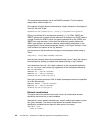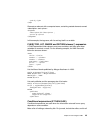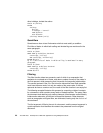
Chapter 2. Technologies in XML 37
In other cases, other information might be encrypted. Here are some of the credit
card details that have been left un-encrypted. This could happen if the credit limit
and the currency of the user’s details must be left visible to other parties.
Example 2-9 Encrypting only the credit card number
<?xml version='1.0'?>
<CreditInfo xmlns='http://creditOrg.org/bills'>
<Name>John Smith<Name/>
<CreditCard Limit='21,000' Currency='AUD'>
<Number>
<EncryptedData xmlns='http://www.w3.org/2001/04/xmlenc#'
Type='http://www.w3.org/2001/04/xmlenc#Content'>
<CipherData>
<CipherValue>P45K98W67</CipherValue>
</CipherData>
</EncryptedData>
</Number>
<Issuer>Wells Fargo</Issuer>
<Expiry date>05/06</Expiry date>
</CreditCard>
</CreditInfo>
Sometimes, it would be appropriate the encrypt the whole document.
Example 2-10 Encryption of the whole document
<?xml version='1.0'?>
<EncryptedData xmlns='http://www.w3.org/2001/04/xmlenc#'
Type='http://www.airline.com/flights/data/media-types/text/xml'>
<CipherData>
<CipherValue>I89H56V34</CipherValue>
</CipherData>
</EncryptedData>
The CipherData element can either envelop or reference the raw encrypted data.
In the first case, that raw data is shown by the contents of the CipherValue
element, while in the second a CipherReference element is used, and this
encloses a URI, which points to the location of the encrypted data.
Example of a XML digital signature
The information that is signed is within the SignedInfo element. The algorithms
used in calculating the SignatureValue element are referenced within the signed
section, but that element itself is in the SignatureMethod element. The
SignatureMethod references an algorithm used to convert the canonicalized



